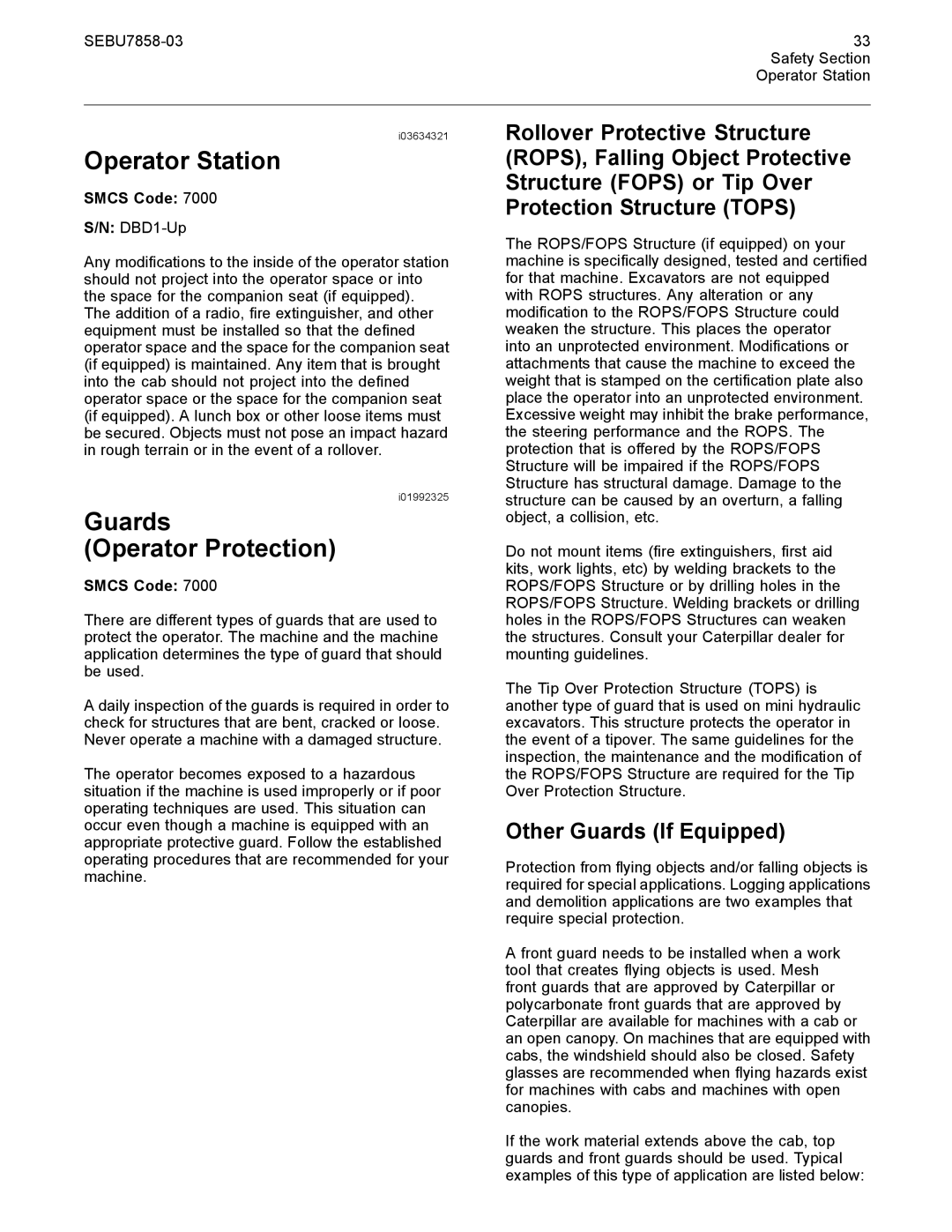627G specifications
The CAT 627G is a versatile and powerful motor grader designed for high-performance earthmoving and construction tasks. This machine combines advanced technology with robust engineering to provide operators with a reliable solution for grading, leveling, and shaping tasks in various terrains.One of the standout features of the CAT 627G is its powerful C9.3 engine, which delivers high horsepower and torque, ensuring optimal performance even in the toughest conditions. This engine is coupled with a responsive transmission system, providing smooth operation and precise control over speed and power. The motor grader is designed for fuel efficiency, reducing operational costs while maximizing productivity.
The CAT 627G boasts a patented blade system that allows for exceptional cutting depth and precision. The blade can be easily adjusted for angle and height, enabling operators to adapt to different grading requirements quickly. With an impressive maximum blade lift height, this machine can handle large volumes of material effortlessly, making it ideal for applications such as road construction, site preparation, and ditching.
Another key characteristic of the CAT 627G is its operator-focused design. The cab is spacious and ergonomically designed, providing excellent visibility of the work area. The intuitive controls and advanced display systems allow for easy navigation of the machine’s functions, improving operator efficiency and reducing fatigue during long working hours. Additionally, the cab is equipped with climate control features, ensuring comfort regardless of external weather conditions.
The integration of advanced technologies sets the CAT 627G apart from other graders in its class. It comes with a comprehensive suite of grade control systems that enhance precision and accuracy in grading tasks. These systems can include GPS, laser guiding, and advanced feedback mechanisms, allowing operators to achieve optimal results with reduced manual effort.
Durability is a hallmark of the CAT 627G, with a robust frame and high-quality components designed to withstand rugged operating conditions. The maintenance-friendly design ensures that service and repairs can be performed quickly, minimizing downtime and keeping projects on schedule.
In summary, the CAT 627G is a powerful, efficient, and technologically advanced motor grader that meets the demands of modern construction and earthmoving projects. With its combination of a high-performance engine, innovative blade system, operator-centric design, and advanced technologies, it is a reliable choice for contractors seeking to enhance their operational efficiency and productivity.
